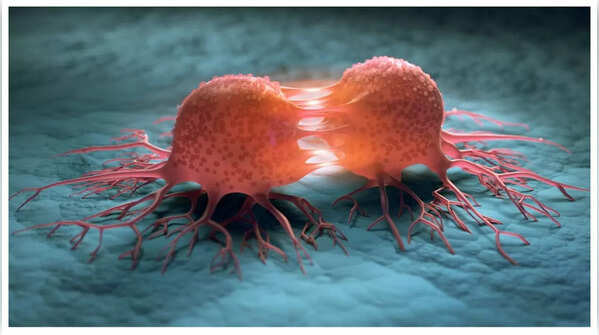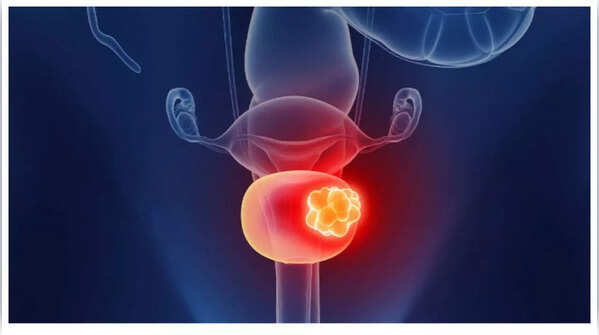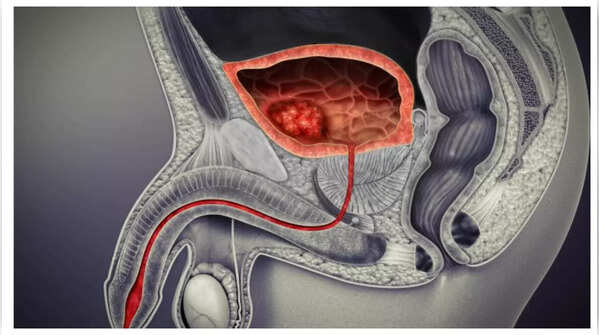Bladder cancer, characterized by the formation of cancerous cells within the bladder tissues, is more prevalent in males over the age of 55. While blood in the urine is widely recognized as a primary symptom, it's not always present. Recognizing subtle, less obvious signs can be crucial for early detection. Here are five such symptoms that warrant attention, though they are not definitive indicators of the disease.

An early warning sign can be an unusual need to urinate frequently. This might manifest as needing to visit the restroom more often than usual, even without increased fluid intake, or experiencing a sudden, intense urge to urinate even when the bladder isn't full. This symptom, easily mistaken for a urinary tract infection or an overactive bladder, can mask the underlying bladder cancer.
If these changes persist for weeks or are accompanied by other symptoms, a medical evaluation is essential to identify potential irritations or growths within the bladder.

Discomfort or a burning sensation while urinating may also point to bladder cancer. While often attributed to common infections like UTIs, this symptom can arise from inflammation or irritation of the bladder lining caused by cancerous cells.
Unlike typical UTIs that respond well to antibiotics, pain linked to bladder cancer may linger or recur after treatment. If painful urination occurs alongside other symptoms such as blood in the urine or increased urinary frequency, seeking medical advice becomes imperative.

Bladder cancer can trigger the sensation of needing to urinate immediately, even when the bladder is nearly empty. This frustrating sensation persists even after using the restroom. As with frequent urination, this can be mistaken for a UTI.
This phenomenon arises because tumors or abnormal growths in the bladder can irritate nerves or diminish bladder capacity, sending misleading signals to the brain. If this feeling persists or worsens, prompt evaluation is crucial to identify potential bladder abnormalities, including cancer.

While early-stage bladder cancer might not induce pain, the disease's progression can lead to discomfort or aching in the lower back or pelvic region. This pain is often described as dull and persistent, potentially being mistaken for muscle strain or other prevalent conditions.
Pain in these areas may signify that the cancer has infiltrated deeper into the bladder wall or surrounding tissues. Unexplained lower back or pelvic pain, particularly when accompanied by urinary symptoms, should not be disregarded.

Although visible blood in the urine is a well-known sign, the urine may appear normal while still containing small amounts of blood detectable only through lab tests. This condition, known as microscopic hematuria, can manifest as a slight discoloration rather than a distinct pink or red hue.
Due to the absence of obvious signs, microscopic blood in the urine often goes unnoticed unless a urine test is performed for other reasons. Individuals with risk factors such as smoking, exposure to harmful chemicals, or a family history of bladder cancer should consider regular urine tests to facilitate early detection of these concealed indicators.
Sources:
Mayo Clinic, Cleveland Clinic, The National Cancer Institute
Newer articles
Older articles
 Vijay Officially Named TVK's Chief Minister Hopeful for Tamil Nadu's 2026 Election
Vijay Officially Named TVK's Chief Minister Hopeful for Tamil Nadu's 2026 Election
 RJ Mahvash Prioritizes Work Over Buzz, Addresses Link-Up Speculation
RJ Mahvash Prioritizes Work Over Buzz, Addresses Link-Up Speculation
 Which Chair Would You Choose? This Personality Test Reveals Surprising Insights
Which Chair Would You Choose? This Personality Test Reveals Surprising Insights
 UNESCO's World Heritage Wonders: Unveiling 10 Iconic Sites, From Petra to the Pyramids
UNESCO's World Heritage Wonders: Unveiling 10 Iconic Sites, From Petra to the Pyramids
 JPG to PDF: A Comprehensive Guide for Graphic Designers & Professionals
JPG to PDF: A Comprehensive Guide for Graphic Designers & Professionals
 Shadman Islam Defends Bangladesh Batters After Day 1 Struggles Against Sri Lanka
Shadman Islam Defends Bangladesh Batters After Day 1 Struggles Against Sri Lanka
 iQoo Z9 Turbo: Rumored Specs Emerge – Snapdragon 8s Gen 3, 6000mAh Battery Highlighted
iQoo Z9 Turbo: Rumored Specs Emerge – Snapdragon 8s Gen 3, 6000mAh Battery Highlighted
 5 Often-Missed Warning Signs of Bladder Cancer You Need to Know
5 Often-Missed Warning Signs of Bladder Cancer You Need to Know
 Tick Bite Paralyzes Fitness Influencer: A Wake-Up Call for Outdoor Enthusiasts
Tick Bite Paralyzes Fitness Influencer: A Wake-Up Call for Outdoor Enthusiasts
 KL Rahul Puts Country First, Prioritizes England Tests Over Newborn Child
KL Rahul Puts Country First, Prioritizes England Tests Over Newborn Child